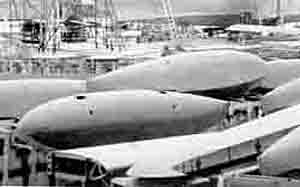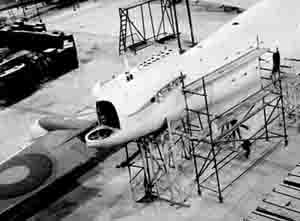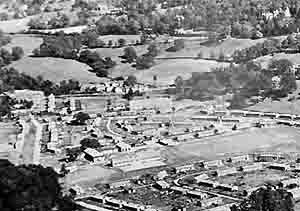

The rapid expansion of capacity
in Britain's aircraft industry at the start of World War II included the building
of two large new hangars at Short Brothers Seaplane Works at Rochester. But,
after the foundations had been laid, concern about the risk of the site being
bombed led to a dispersal plan and the buildings were, instead, put up far
to the north, on the shores of Windermere. Although hundreds of miles from
the rest of the works, they were still known by their original names, numbers
19 and 20 shops.

The factory was a full manufacturing facility, not just a place relying on parts from other Short Brothers works. In fact, it appears there was considerable duplication which would not have been necessary outside of a war. Parts and sub assemblies for the wings were made at Windermere and shipped back to Rochester while complete wings were shipped to Windermere, along with floats, and some other small parts.

Number 19 Shop was used for parts manufacture while Number 20 shop, by the
lake, was the main assembly hangar. The hangar was huge for its day, the only
building big enough to house the Shetland flying boat, planned to replace
the Sunderland.
Building an aircraft factory in Windermere presented one immediate problem
- where to house the workers. With a plan for up to 1,500 people working at
the factory, accommodation locally would be stretched beyond breaking point.
So, the Ministry of Aircraft Production simply created a new Lakeland village.
Calgarth consisted of bungalows for married quarters and hostel accommodation
for single workers built half a mile from White Cross Bay.
The village was taken over by Windermere Council after the war but, since
the bungalows were cheaply and poorly built, they were all demolished by the
mid 1960s.

The factory made use of a small core of skilled workers from
Rochester and also others drafted in from other aircraft factories across
the north west. But the main workforce were, at least initially, unskilled
and learned quickly how to build Sunderlands.
The sucess of their work was undeniable; one of the aircraft - DP198 - was
still in service in Singpore in 1959 when Sunderlands were withdrawn from
RAF use. She was the longest serving RAF Sunderland.